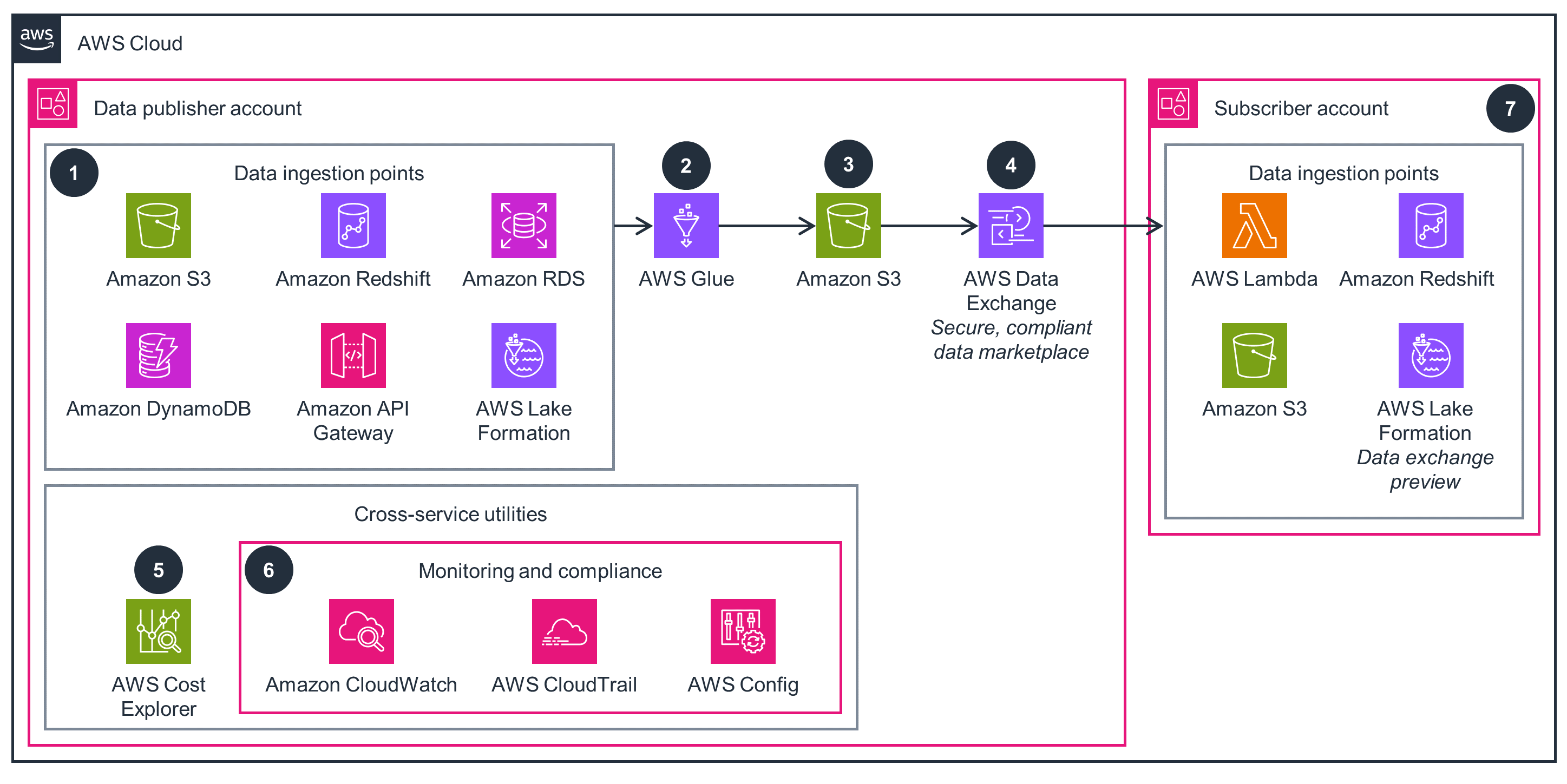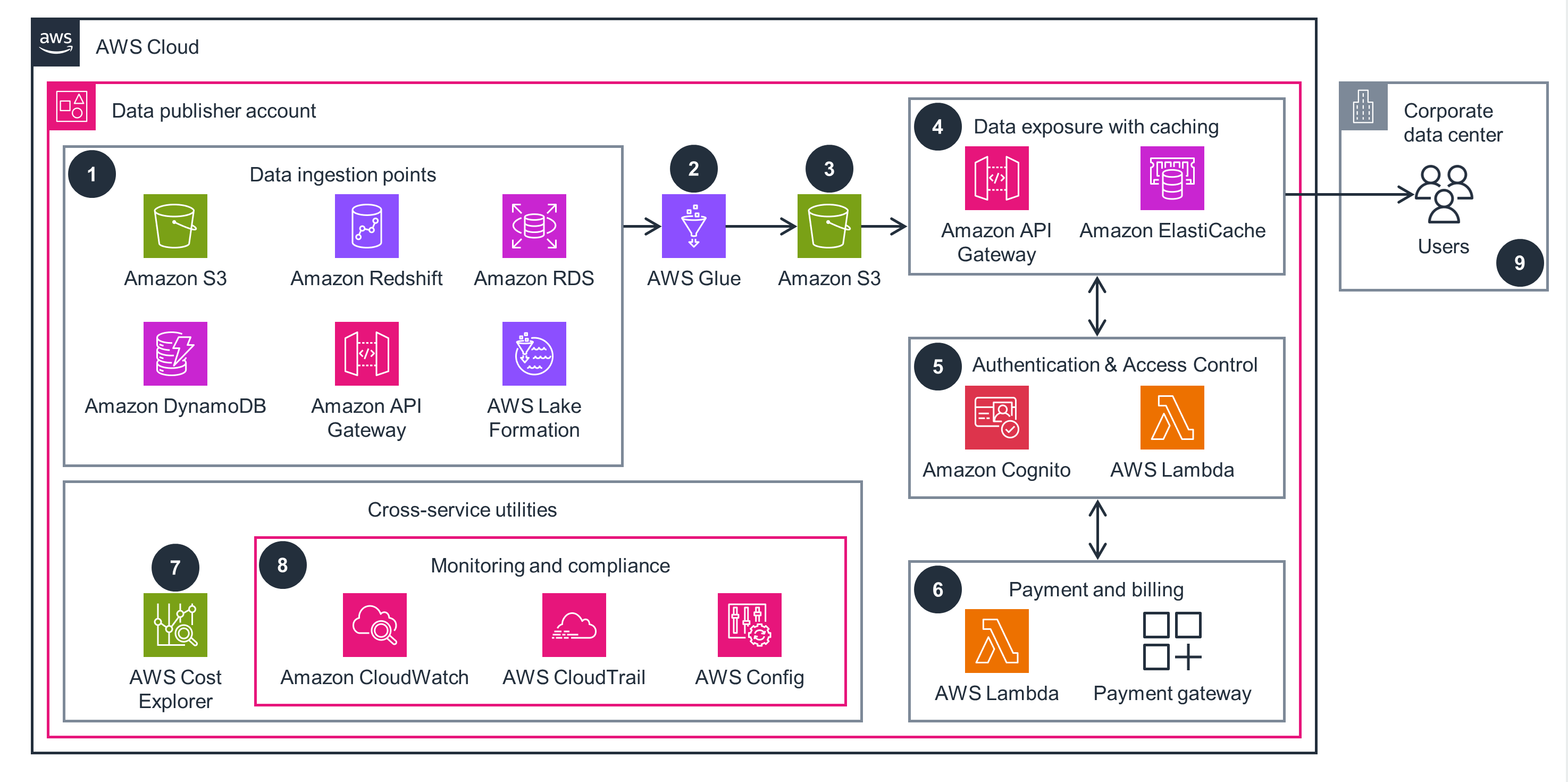- AWS Solutions Library›
- Guidance for Research Data Monetization on AWS
Guidance for Research Data Monetization on AWS
Capture measurable business value leveraging data-driven insights
Overview
Architecture Diagram
Research Data Monetization
This architecture diagram shows how you can improve data monetization with other AWS customers.

Research Data Monetization on Premises
This architecture diagram shows how you can improve data monetization with customers that use either cloud providers other than AWS or on-premises servers.

Well-Architected Pillars
The architecture diagram above is an example of a Solution created with Well-Architected best practices in mind. To be fully Well-Architected, you should follow as many Well-Architected best practices as possible.
This Guidance uses CloudWatch, CloudTrail, and AWS Config to improve monitoring, helping provide the information and alerts you need to respond quickly to events and facilitate compliance with strict requirements.
This Guidance uses AWS Data Exchange to make sure that all data listed on the exchange is handled securely. Additionally, API Gateway and Amazon Cognito confirm authentication and authorization for data access.
This Guidance uses AWS services that are all fully managed and serverless, reducing your operational burden to reliably maintain a data product. For example, Lambda maintains high availability by using multiple Availability Zones.
This Guidance uses AWS services that are fully managed and serverless, automatically scaling up and down as needed to maintain performance. This offloads much of the burden of management from small tech teams while helping nonprofits achieve strict compliance requirements.
This Guidance uses serverless AWS services, so you only pay for what you use rather than provisioning resources that incur costs while idle. And because they are fully managed, you reduce the total cost of ownership. Additionally, you can use AWS Cost Explorer to track your resource usage and costs so that you can make adjustments as needed to stay within your budget.
This Guidance uses serverless AWS services, which scale up and down to meet demand. This reduces energy usage because these services run more efficiently, and you don’t need to provision unnecessary resources that would consume energy while idle.
Disclaimer
Did you find what you were looking for today?
Let us know so we can improve the quality of the content on our pages